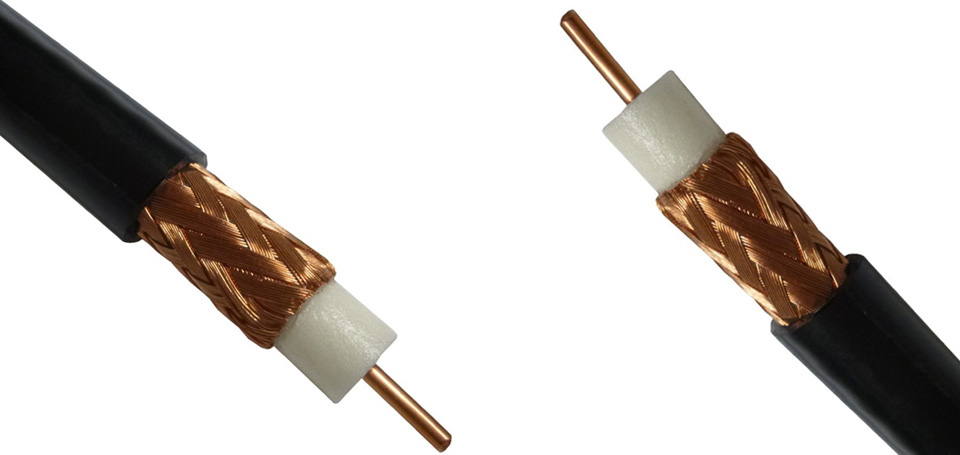The
coaxial cable is divided into baseband coaxial cable and broadband coaxial cable (i.e., network coaxial cable and video
coaxial cable).
Coaxial cable Ω baseband cable and 50 75 Ω broadband cable.

The baseband cable is divided into the coaxial cable and the thick coaxial cable.
The baseband cable is used only for digital transmission, with a data rate of 10Mbps.
Coaxial Cable refers to two concentric conductors, while conductors and shielding layers share the same axial Cable.
The most common type of coaxial cable is composed of insulating material separation of copper conductor, is another layer of the outside of the layer insulation ring conductor and an insulator, and then the whole cable made of PVC or Teflon materials sheath around.
The coaxial cable is divided into four levels: the central copper wire (single strand of solid wire or multi-strand wire), plastic insulator, network conductive layer, and wire cover.
The central copper wire and the mesh conductive layer form the current loop.
Because the central copper wire and the net conducting layer are called coaxial relations.
Coaxial cables transmit alternating current instead of direct current, which means that several times a second is reversed.
If you use ordinary wire transmission of high-frequency current, this wire is the same as a root to launch a radio antenna, the effect is the loss of signal power, makes the received signal strength decrease.
Coaxial cable was designed to solve this problem.
The radio that is emitted by the Central Line is isolated by a network of conductive layers, which can be ground to control the radio emitted.
Coaxial cable is also a problem, that is, if the cable is a section of the larger extrusion or distortion, so the distance between the center wire and mesh conductive layer is not consistent, which can cause internal radio waves will be reflected back to the signal source.
This effect reduces the power of the receiving signal.
To overcome this problem, a layer of plastic insulation is added between the center wire and the mesh to ensure that the distance between them is consistent.
This also makes the cable more rigid and less prone to bending.
